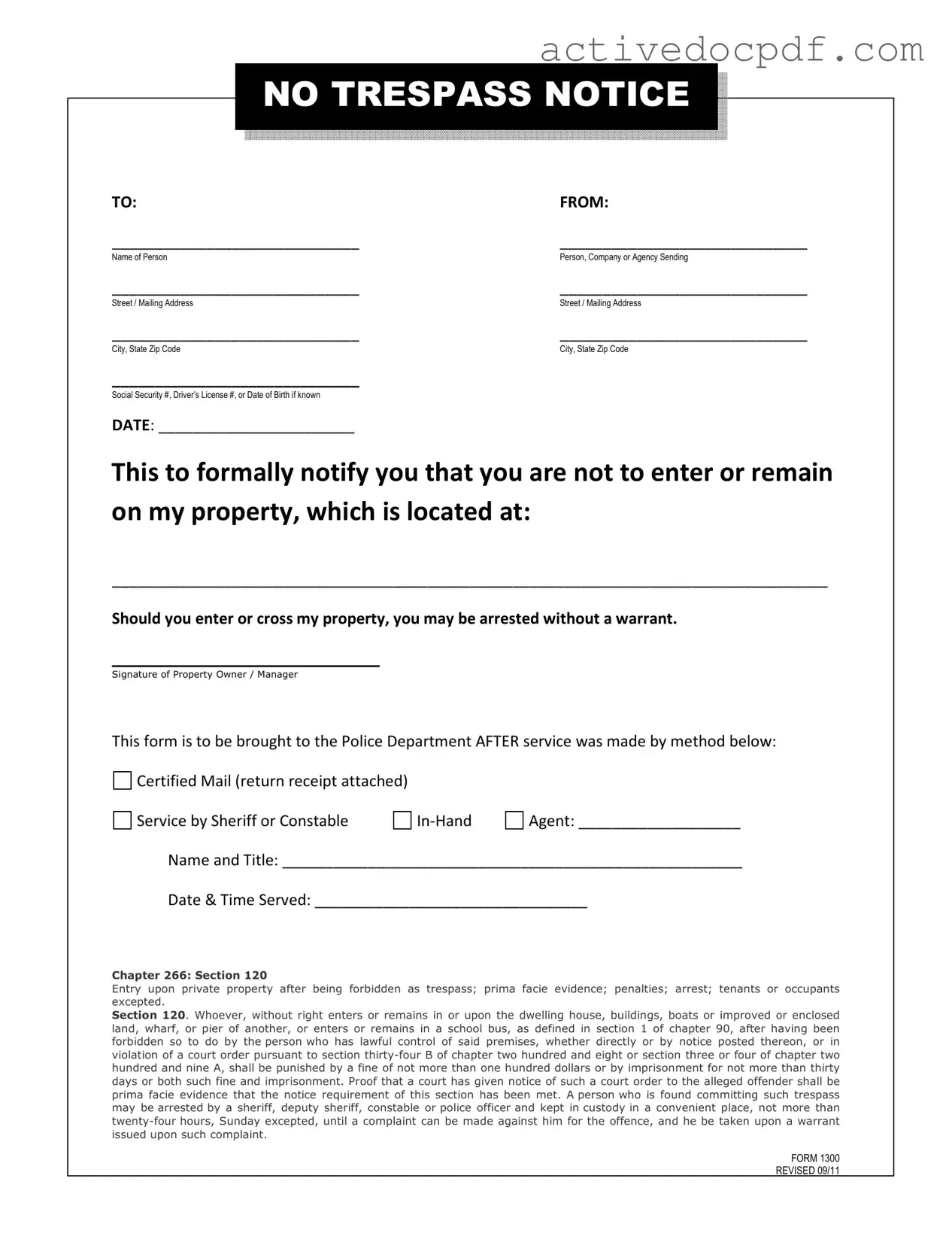Free No Trespassing Letter PDF Form
The No Trespassing Letter form serves as a formal notification to individuals that they are prohibited from entering or remaining on a specified property. This document not only establishes clear boundaries but also outlines the legal consequences of trespassing, including potential arrest without a warrant. By utilizing this form, property owners can assert their rights and ensure their space is respected.
Edit Form Online
